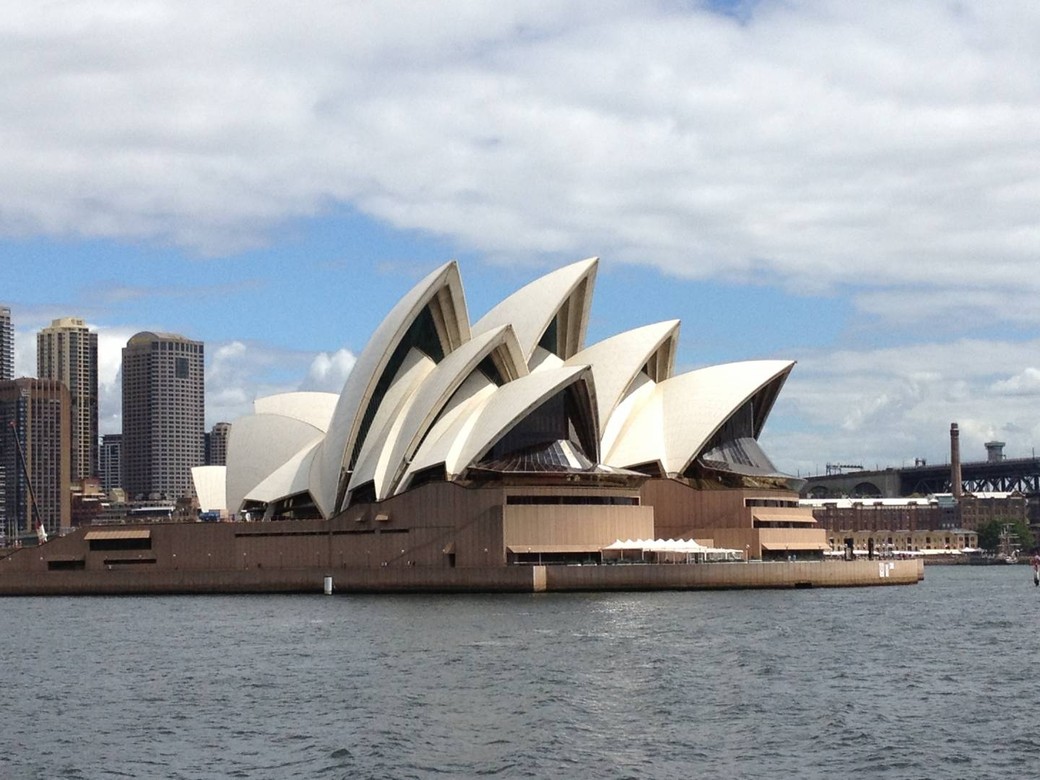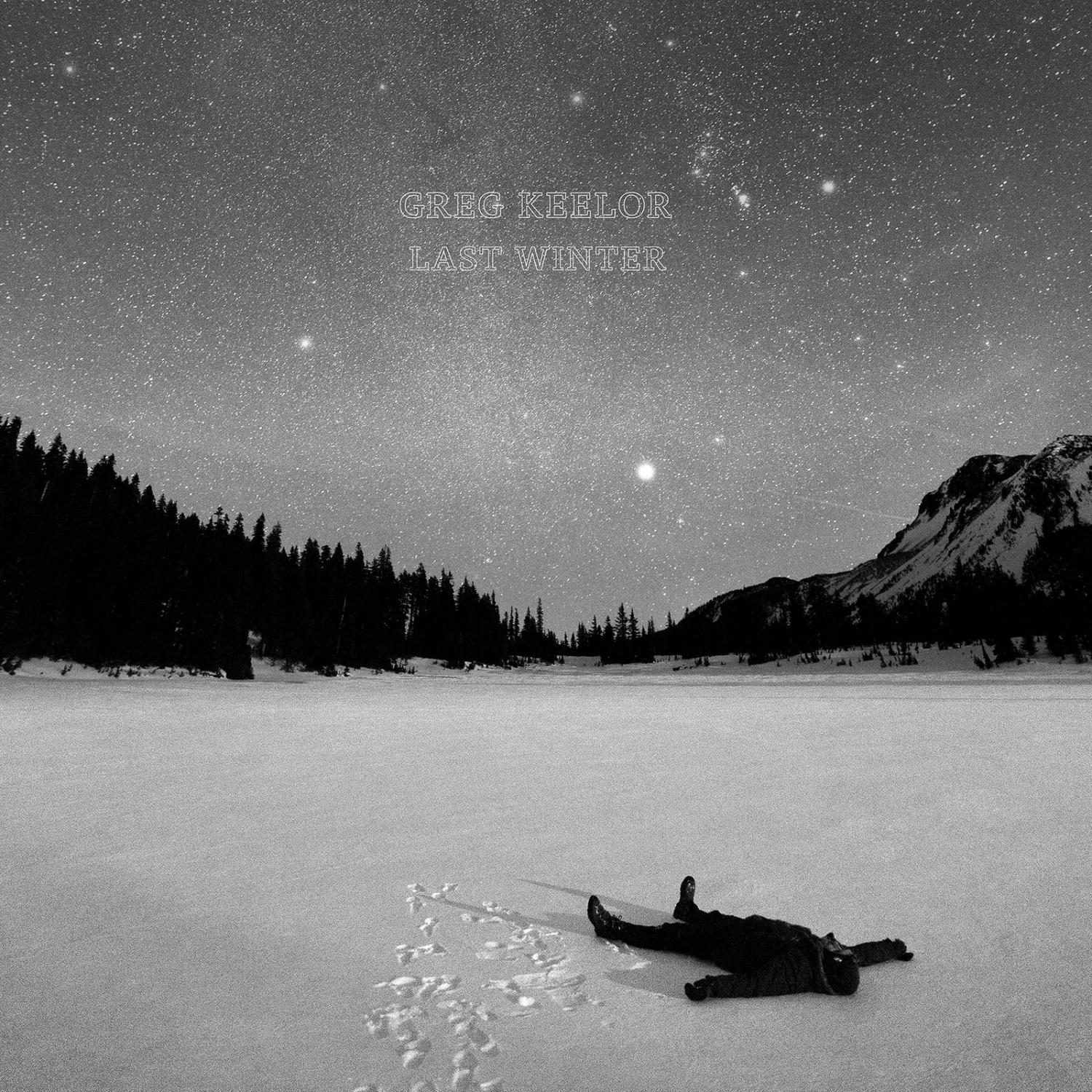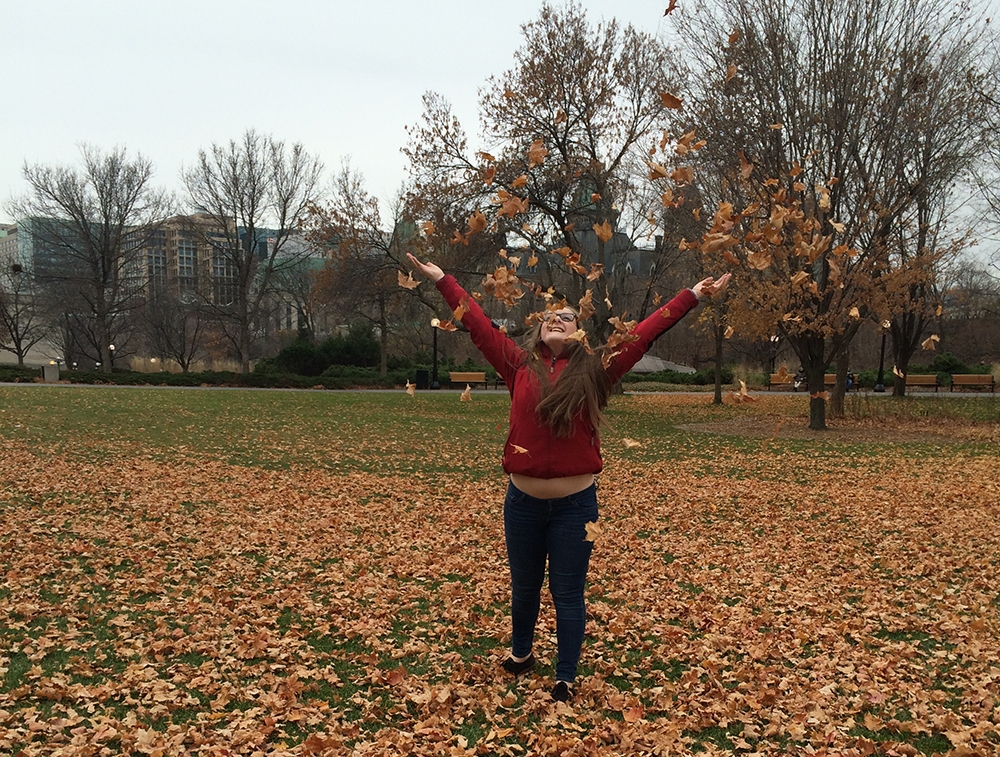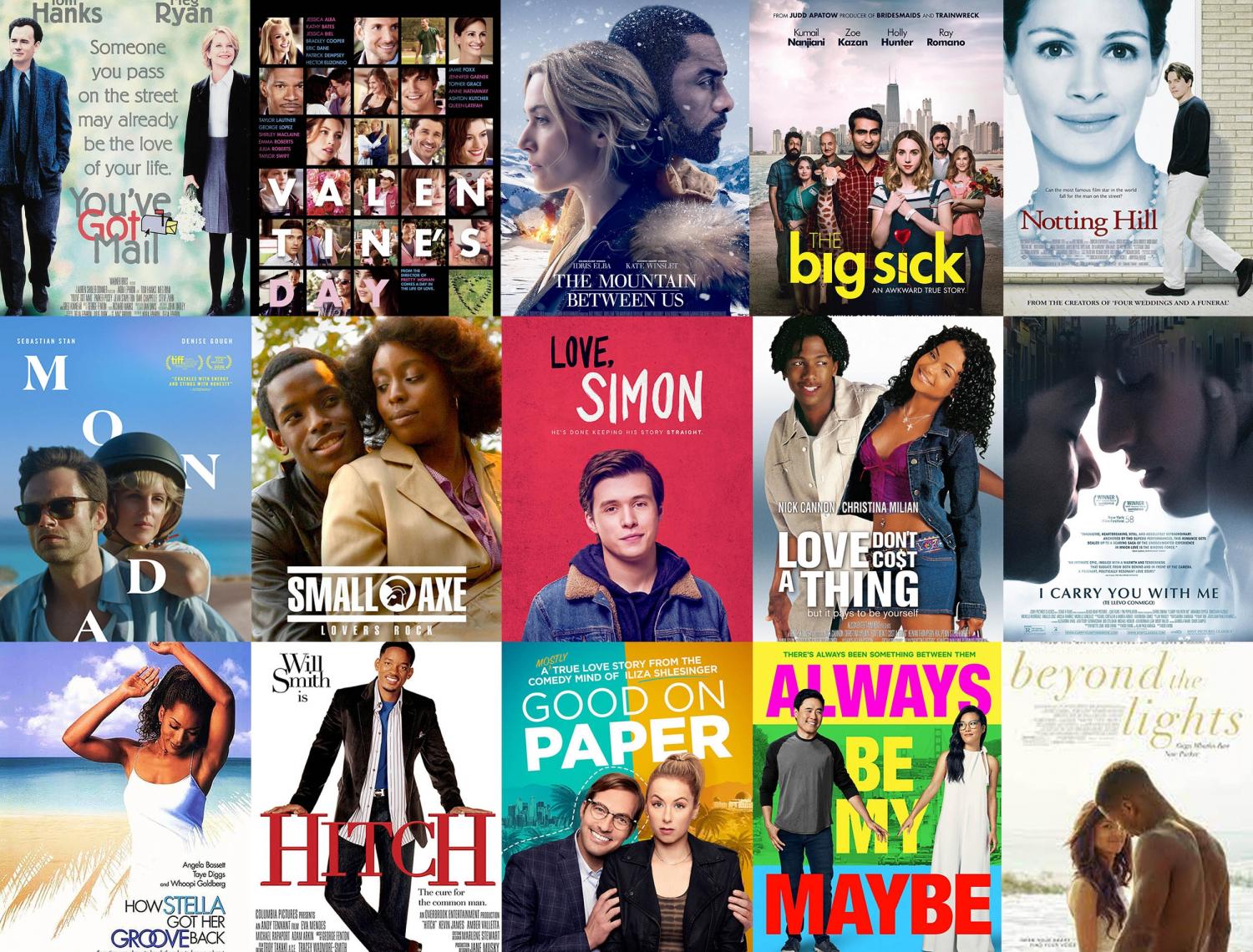
6 Weeks, 5 Countries, Countless Adventures
Traveling is a safe romance—it can be as brief or as long as you want and it doesn’t demand much except a sense of adventure. It adds a wealth of stories to your conversation arsenal, more weight in souvenirs to your luggage and obviously a better understanding of the beautiful, bountiful and chaotic world around us. Then there’s always the added security of knowing you can return home. This was the kind of romance I was craving and had missed for a few years.
Instead of planning months ahead, I made an impromptu decision when I found a cheap flight while trolling online—completely out-of-character for my organized and routine-driven self. For a mere $1,600, I could spend a week in Vancouver and then hop on flights every Monday morning to Copenhagen, Amsterdam and Rome. (My fifth country, Australia, came later with another impromptu flight purchase). With close friends and family in each destination, my accommodations were free as well as many meals, which is why I packed a few bottles of maple syrup as gifts.
On February 4, I started my journey in Vancouver, staying with my brother, a PhD student at UBC. I spent days wandering the scenic campus, daydreaming at nearby Wreck Beach, eating lots of take-out sushi and attending yoga classes at Semperviva in Kitslano. At Granville Island, we shared a heaping platter of fish and chips at Tony’s Fish and Oyster Café a local gem for its homemade seafood dishes and casual appeal. Meals are served with big personality from the friendly owner, but it’s a tiny restaurant that often fills up quick, so get there early. Eager to breathe a bit of fresh forest air, we drove to North Van, stopping at Lynn Canyon to walk the huge suspension bridge that swayed as we gazed down at waterfalls and cascading pools. We also took a 3-hour road trip to Seattle, climbing up the space needle and perusing the famous Pike Street Market beside the first established Starbucks. I think I counted about 10 Starbuck coffee houses on one city block—they’re everywhere. 
Landing in Viking territory
Officially leaving Canada, I hopped on a 9-hour flight to Copenhagen where my best friend—also completing her PhD—greeted me with a Danish flag in-hand. We took a walking tour around the city using the free VisitCopenhagen app, which provides interesting nuggets about the various museums, statues and sites as well as locates restaurants and other attractions. We visited the Ny Carlsberg Glyptotek art museum and wandered through the cobblestone streets of the main shopping district. At the National Museum of Denmark, I picked up a few Viking-replica souvenirs including a drinking horn. Everything is very expensive—a green tea runs about $7. Try to stay off the beaten tourist path along the canals and opt for restaurants down the side streets for a more affordable meal. One thing to splurge on is an authentic Danish pastry. These flaky delights don’t compare to their North American counterparts. My favourite was a høj snegl med crème (high snail with custard); a snail-like pastry filled with creamy custard and drizzled with chocolate around the edges. Heading west of the city, we took a 4-hour train to Aarhus, the second-largest city in the country.
Drawing young people from the west and southern areas of the country to study at the main university, Aarhus feels more like a student town—most people on the street are under 30. This makes for quite a lively urban centre of cafes, restaurants and music festivals. It’s also the oldest city in Scandinavia with many intriguing archaeological discoveries including Viking longhouses. Walking through a true Viking forest along the coast, I noticed an absence of wildlife, including squirrels. That’s because most animals were hunted to extinction—it’s really that old. Instead, you’ll find many young, athletic Danes jogging by on the path. From the forest, you can access a sandy beach, strewn with seaweed and shells. It’s a local hotspot in summer and packed with sunbathing bodies.
A modern attraction set to impress is Your Rainbow Panorama installation on the roof of the ARoS Aarhus Kunstmuseum. A circular walkway spanning 150 metres, visitors become a part of the actual art piece as they stroll through panes of coloured glass. It makes for incredible aerial pictures of the city, viewed from the rainbow spectrum.
A must see—that’s also free—is a visit to the Church of Our Lady, one of the largest churches in the city. Due to the Protestant Reformation, which saw many iconic religious objects destroyed, most of the church’s interior is whitewashed. A few restorations have revealed incredible Medieval paintings underneath the white paint of saints and even scenes from daily life. In the chapel where I attended a mass, one part of the wall is covered in black and white checkerboard and the spines of the vaulted ceilings are outlined in a rust colour. But the church’s greatest secret is what lies beneath its altar: an underground crypt church from 1060, discovered during restorations in the 1950s. It’s the oldest extant stone church in Scandinavia and you’ll be surprised at its relatively small height when walking through it. Archways fill the space and two graves—one of a child and one of an adult—are built into the floor. If you’re lucky enough to visit at the right time, the church offers a monthly service in the crypt church.
Navigating a maze of canals
 At Schiphol airport, I was greeted with a bouquet of tulips from another best friend. Swamped in a sea of morning commuters, we quickly hopped on a train to Leiden, where she lived in an adorable courtyard apartment. Leiden is a beautiful city with lots of canals, fresh farmer’s markets (vendors will vacuum-seal cheese wheels for plane travel for you) and great shopping. Many people live here for the affordable rent while working in Amsterdam. Throughout the week, I went to ‘work’ with my friend in the city, wandering around the canals and then meeting up for lunch and the train ride home. The Anne Frank Huis is cleverly curated and very minimalist, save for a few pictures and cases safeguarding pages of Anne’s diary. Visitors walk through the entire house including climbing up through the apartment where her family hid, behind the actual bookcase. Otto Frank, Anne’s father who survived the war, said he wanted all the original furniture to be removed from the living spaces in honour of the souls who used to live there. It’s an extremely overwhelming experience—you can’t help but feel a rush of emotions as you enter each room.
At Schiphol airport, I was greeted with a bouquet of tulips from another best friend. Swamped in a sea of morning commuters, we quickly hopped on a train to Leiden, where she lived in an adorable courtyard apartment. Leiden is a beautiful city with lots of canals, fresh farmer’s markets (vendors will vacuum-seal cheese wheels for plane travel for you) and great shopping. Many people live here for the affordable rent while working in Amsterdam. Throughout the week, I went to ‘work’ with my friend in the city, wandering around the canals and then meeting up for lunch and the train ride home. The Anne Frank Huis is cleverly curated and very minimalist, save for a few pictures and cases safeguarding pages of Anne’s diary. Visitors walk through the entire house including climbing up through the apartment where her family hid, behind the actual bookcase. Otto Frank, Anne’s father who survived the war, said he wanted all the original furniture to be removed from the living spaces in honour of the souls who used to live there. It’s an extremely overwhelming experience—you can’t help but feel a rush of emotions as you enter each room.
As an art lover, I had to visit the Van Gogh Museum, which was just a short walk from the main square. It’s an interesting chronological exhibit of his life, with works that aren’t as well recognized. The information panels also provide a deeper glimpse into Van Gogh’s thought processes and relationships that greatly influenced his artworks. I also visited FOAM, the contemporary photography museum that has surprisingly free admission. The collection is constantly changing and showcases very progressive projects including a room covered in paper to allow the artist to write personal notes beside each photo, revealing behind-the-scenes details. Aside from museums, Amsterdam has some adorable cafes with reasonable prices. I indulged in an authentic Dutch apple pie or 7 inches of layered apples in a delicious crust. One of my favourite spots was Bagels and Beans, a chain café specializing in perfectly brewed coffees and an extensive selection of bagels and toppings. I had steamed milk that came with a side of chocolate chips to stir in and a bagel with butter and chocolate sprinkles, a true Dutch treat. I also stopped at a local chocolatier and bought a few pieces of broken chocolate bunnies in bulk with my spare change—an economical way to satisfy your sweet tooth without buying a whole box! Another popular street snack are paper cones filled with thick-cut fries and topped with a large glob of mayonnaise.
Just outside the rush of the city, my friend and I ventured into the Hamam, a Turkish bathhouse. With separate quarters for each gender and covered in colourful tile, the baths are extremely cleansing, serving as a weekly tradition for many Turks. In the first room, we were instructed by the masseur to rinse off before she applied a black soap all over our skin. Then we spent an hour between the steam room and sauna. Going back to the masseur, we laid on a warm table as she exfoliated our skin with a rough cloth (this is purchased upon walking in and you can keep it after your treatment). Then we sat with a thicker black soap before rinsing and heading back into the steam room and sauna. We exited the bathhouse with incredibly smooth and silky skin, feeling warm and relaxed—a bonus for any weary traveler.
Walking through ancient ruins
Leaving Amsterdam as it began to snow lightly, I headed to Rome, where thankfully, the weather was much warmer. I stayed with a family friend who runs guided tours of the city’s sites, which afforded me the ‘star treatment’: bypassing huge lineups and getting my own private history lesson.
We began our mornings with a traditional Italian breakfast: coffee accompanied by a flaky croissant (mine was usually stuffed with Nutella). Rome is by far one of the most walkable cities I have experienced—finding parking is horrendous and no one follows the rules of the road anyways—every corner turned was a new adventure flanked by ancient architecture and fountains.
Receiving 20,000 visitors daily during peak season, the Vatican is a separate state in the middle of Rome—it has its own laws, customs, police and even postal service. Once you step in the Vatican, you are no longer in Rome. While in St. Peter’s Square, we stood on metal markings on the ground where the four rows of columns magically disappeared to one. It was the architect’s intention for the viewer to see this single row only at certain points throughout the square. Inside, we walked through halls of marble Roman statues, silk woven tapestries and painted maps representing every region of Italy. Of course the walls and ceilings of the papal apartments were the most exquisite, with detailed historical and religious scenes painted by Raphael (or his pupils). Walking in the Sistine Chapel was not as spiritual as I had hoped because of the mass of people herded through as guards shushed people. The ceiling was still an incredible sight and the bright blue colours, made from crushed lapis, struck me.
We also visited the Colosseum, a mammoth structure built with incredible ingenuity. Romans apparently feared crowds and the multiple arches allow for the building to be evacuated in mere minutes. The Pantheon was built as a temple to the ancient Roman gods but now serves as a church. It’s domed ceiling features a huge oculus at the top that if closed, would cause the entire ceiling to crumble.
Eating is one of the most enjoyable experiences in Rome. Italians typically eat pasta for lunch and have a lighter dinner of salad, cheese and meat—a fact I found quite smart, as you tend to walk off that pasta during the day and prevent any belly bloat. I had plates of pasta in light tomato and pork sauces, fried artichokes, boiled artichokes, artichoke pizza and the creamiest gelato I’ve ever had.
Driving out of Rome, we headed south to the Palace at Caserta, constructed for the Bourbon kings of Naples in the 18th century. Now a section of it is used as a museum while a large portion serves as a military base for the country’s air force. The gardens at the back of palace span 120 hectares, divided by a 7 km step-like fountain through the centre. Modeled after Versailles, its Baroque décor is lavish and some parts of the ceiling were once covered in pure gold. From Caserta, we drove south to Sorrento, overlooking the Bay of Naples. Since it is close to Pompeii, the soil has been enriched from the eruption at Mount Vesuvius, providing perfect conditions for lemons. Thus, the town has become famous for producing limoncello and many shops sell lemon-scented soaps and the famous liqueur. It’s also known for colour ceramic pieces including tiles and dinnerware. Sorrento is a popular tourist destination during the summer months for its stunning coastal cliffs and oceanic views. Although I was there in March, I still found it beautiful and the orange trees lining the streets were full of new fruit.
The adventure down under
 Flying home for 18 hours, I swapped out my winter apparel for shorts and flip-flops for my 24-hour flight to Sydney. I had the opportunity to stay with another set of friends in Australia and decided to continue my travel binge—why not?! It may be one of the most expensive places in the world (purchasing groceries is often the same price as eating out) but it’s a place that has drawn thousands of Canadians and I had always wanted to visit.
Flying home for 18 hours, I swapped out my winter apparel for shorts and flip-flops for my 24-hour flight to Sydney. I had the opportunity to stay with another set of friends in Australia and decided to continue my travel binge—why not?! It may be one of the most expensive places in the world (purchasing groceries is often the same price as eating out) but it’s a place that has drawn thousands of Canadians and I had always wanted to visit.
Sydney was a gorgeous 25C throughout my two weeks there and I soaked up the sunshine every moment I could. Staying in Surry Hills, I was mere minutes from the train station to Circular Quay and Darling Harbour. Upon my arrival, we immediately ventured to the famous Opera House for patio cocktails before seeing the Sydney Philharmonic Orchestra. It was an incredible welcoming first day.
On another beautiful day, we took the ferry to Manly Beach, a famous tourist spot with a lengthily boardwalk of seafood restaurants and shops. The ferry is also a great way to view the city and take stunning photographs of the Opera House. Following a local tip, we walked through the nearby neighbourhood and up a steep hill to discover a more secluded area called Freshwater Beach. Other day trips included a picnic (Tim Tams included) at the Royal Botanical Gardens and a walk to Balmain, a quaint suburb just outside Sydney with a great shopping strip and reasonable restaurants. Since it fostered the establishment of the Australian Labor Party, the area is associated with the country’s working-class culture. Here you’ll find the Scottish pub Sir William Wallace Hotel, the famous watering hole of Mel Gibson. After grabbing a drink here, we went to a nearby deli for fresh sweet potato and quinoa salads. Our last day trip began with a bus ride to Coogee Beach where we picked up the coastal trail to hike 6 kms to Bondi Beach. Feasting on coastal views and steep cliffs, we cooled down with paddle pops (popsicles) along the way and enjoyed a break from the fast-paced city.
 To truly experience Australian beach culture, we flew up the Gold Coast to Byron Bay, the perfect hippie town of serious surfers and tie-dye, where most pedestrians stroll barefoot. We rented a beach house online that turned out to be a beautiful oasis with a wrap-around patio and sliding glass doors meeting a peaked ceiling. Geckos woke us up for early morning surfing and the hike to the nearby lighthouse brought us to the most easterly point of Australia. Aside from surfing and swimming, we ate an incredible amount of fresh seafood. The Beach Hotel has an expansive patio with a casual menu and musical performances. St. Elmo Dining Room and Bar serves inventive tapas include beef cheek and soft shell crab sliders. For a relaxed beach vacation with a friendly town of hippies and expats, Byron Bay will remain forever high on my list of favourite destinations.
To truly experience Australian beach culture, we flew up the Gold Coast to Byron Bay, the perfect hippie town of serious surfers and tie-dye, where most pedestrians stroll barefoot. We rented a beach house online that turned out to be a beautiful oasis with a wrap-around patio and sliding glass doors meeting a peaked ceiling. Geckos woke us up for early morning surfing and the hike to the nearby lighthouse brought us to the most easterly point of Australia. Aside from surfing and swimming, we ate an incredible amount of fresh seafood. The Beach Hotel has an expansive patio with a casual menu and musical performances. St. Elmo Dining Room and Bar serves inventive tapas include beef cheek and soft shell crab sliders. For a relaxed beach vacation with a friendly town of hippies and expats, Byron Bay will remain forever high on my list of favourite destinations.
A convenient romance
After 6 weeks abroad, I returned home with a travel journal exploding with stories, heavier luggage and a better understanding of the fascinating places and people oceans away. Before my trip, I read many travel blogs encouraging readers to simply take the plunge. It’s advice I actually took to heart because you’ll never have enough money or time—if you want to travel, do it right now.














